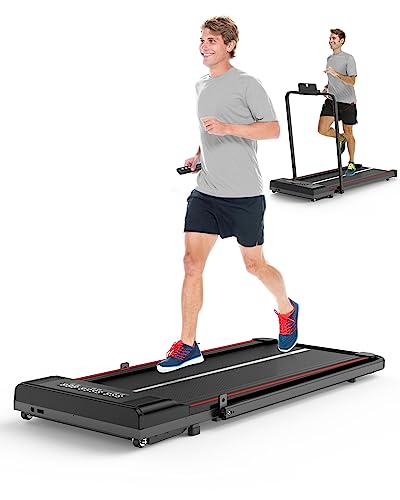
Manual Treadmill For Walking
Add a review FollowOverview
-
Founded Date July 5, 1980
-
Sectors Information Technology
-
Posted Jobs 0
-
Viewed 30
Company Description
The 10 Most Scariest Things About Non Electric Treadmill
The Rise of Non-Electric Treadmills: An Eco-Friendly Choice for Fitness Enthusiasts
Recently, the physical fitness market has actually seen a rise in need for non-electric treadmills. As people become more mindful of their carbon footprint and seek sustainable choices for their exercise regimens, non-electric treadmills have actually emerged as an appealing option to their motorized counterparts. This article explores the advantages, types, and features of non-electric treadmills, culminating in a thorough FAQ area to attend to typical questions.

What is a Non-Electric Treadmill?
A non-electric treadmill, often described as a manual treadmill, runs without a power source. Instead of being propelled mechanically, the user’s body weight and movement drive the belt. This style produces a distinct experience, frequently needing more effort but providing several advantages in regards to fitness and sustainability.
Advantages of Using Non-Electric Treadmills
-
Sustainability: Non-electric treadmills remove the requirement for electricity, making them eco-friendly. This reduction in energy consumption can considerably add to lower electricity bills and a decreased carbon footprint.
-
Boosted Workout Efficiency: Users must actively engage their muscles to keep speed, which can cause more reliable exercises. This increased effort can equate to a greater calorie burn compared to electric designs.
-
Adaptability: Many non-electric treadmills can be adapted to provide various incline levels. This function enables users to customize their workouts, targeting various muscle groups and difficult themselves in brand-new methods.
-
Toughness: Generally, Non Electric Treadmill-electric treadmills have less mechanical components than powered versions, leading to lower maintenance expenses and increased longevity.
-
Compact Design: Many non-electric treadmills are designed with portability in mind, making them simple to move and keep, perfect for those with minimal space.
Types of Non-Electric Treadmills
Non-electric treadmills can be classified into numerous types based on style and features:
| Type | Description | Pros | Cons |
|---|---|---|---|
| Woodway Treadmills | Understood for their curved shape, providing a special running experience. | Minimizes influence on joints, perfect for runners. | Normally more expensive. |
| Flat Non-Electric Treadmills | Standard style offering straightforward performance. | Inexpensive and easy to utilize. | May not have advanced features. |
| Incline Manual Treadmills | Allows users to set an incline for added problem. | Versatile and adjustable workouts. | Can be physically demanding. |
| Folding Non-Electric Treadmills | Space-saving styles that can be quickly stored away. | Practical for little home. | Might be less tough than non-folding choices. |
Key Features to Consider
When picking a non-electric treadmill, consumers ought to prioritize the following features:
-
Build Quality: Ensure that the frame is durable and made of durable products to hold up against day-to-day usage.
-
Running Surface: A wider and longer running surface offers a more comfy experience, particularly for taller people.
-
Incline Options: Adjustable incline settings can enhance workout range and strength.
-
Weight Capacity: Check the weight limit to make sure the treadmill accommodates all designated users.
-
Portability: If space is a concern, search for a light-weight treadmill with wheels for easy movement.
-
Guarantee: A good guarantee reflects the maker’s confidence in their item, using comfort to consumers.
Non-Electric Treadmill vs. Electric Treadmill
| Function | Non-Electric Treadmill | Electric Treadmill |
|---|---|---|
| Power Source | Manual (no electricity required) | Requires electricity |
| Maintenance | Very little, typically needs no repairs | May require mechanical servicing |
| Calorie Burning | Normally greater due to user effort | Varies, often lower for the same speed |
| Customizability | Minimal to Manual Treadmil modifications | Deals numerous pre-set programs |
| Cost | Generally more cost effective | Can be more costly due to functions |
Regularly Asked Questions (FAQ)
1. Are non-electric treadmills appropriate for beginners?
Yes, non-electric treadmills can be suitable for newbies, although they may need a steeper learning curve for those unfamiliar with manual treadmills. A mild start on a low incline can relieve newbies into their physical fitness journey.
2. How do I keep a non-electric treadmill?
Upkeep is minimal. Routine cleaning and looking for any wear on the belt or deck can help prolong the life of the treadmill. Constantly refer to the producer’s standards for detailed maintenance instructions.
3. Can I work on a non-electric treadmill?
Definitely! Lots of non-electric treadmills are developed to accommodate running. Nevertheless, users must begin by Walking Treadmill and gradually increase their rate and incline as they develop strength and endurance.
4. How do non-electric treadmills deal with weight?
The majority of Non Electric Treadmill-electric treadmills have a weight capability comparable to electric models. However, it is important to check the specifications to ensure correct assistance for the user’s weight.
5. Exist any downsides to utilizing a non-electric treadmill?
Some users might find that non-electric treadmills need more effort, potentially making them more tiring. Additionally, they might do not have sophisticated functions found in electric models, such as integrated exercises or heart rate screens.
As more people look for environment-friendly and efficient fitness alternatives, non-electric treadmills have actually begun to capture the attention of workout lovers. With their blend of sustainability, efficiency, and resilience, these manual gadgets can elevate any workout regimen. By comprehending their advantages, types, and vital features, customers can make educated decisions in choosing the best treadmill for their needs, eventually supporting a healthier lifestyle while contributing to a greener world.
